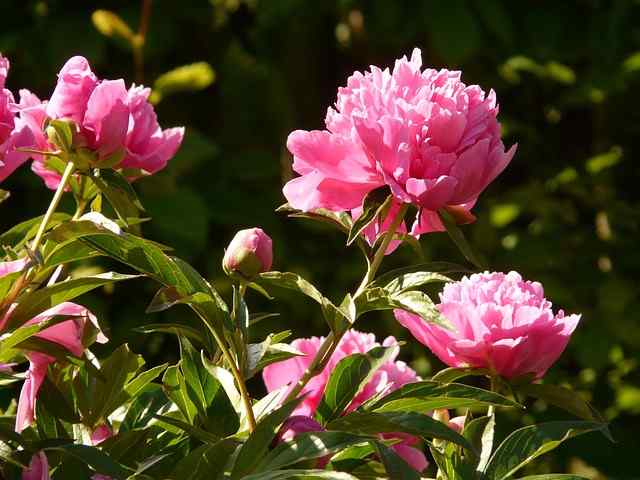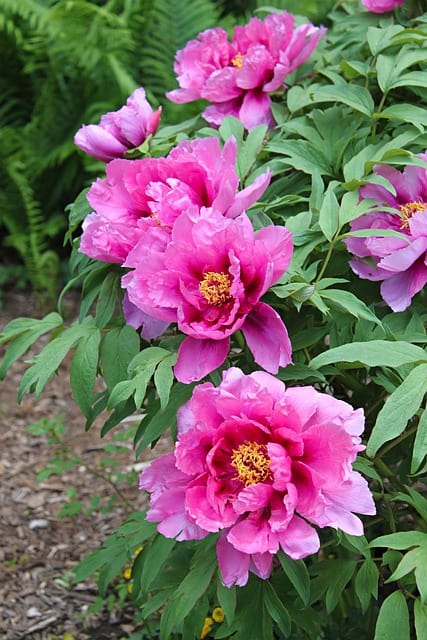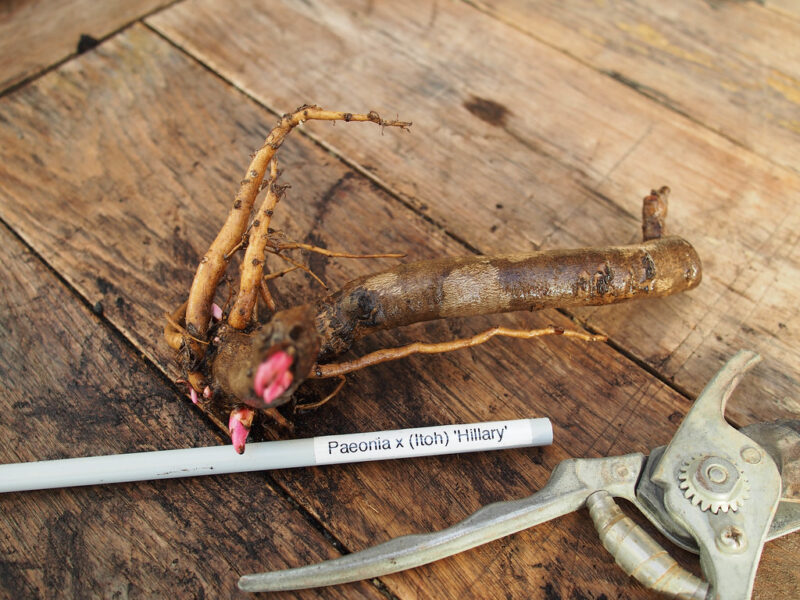This post will walk you through the ideal times for planting, tips for ensuring a successful bloom, and important care they require throughout the seasons. Let’s dive in and explore the world of peonies!
The Ideal Planting Time for Peonies
Fall Planting: The Optimal Choice

For optimal results, the best time to plant peonies is in the fall, roughly six to eight weeks before the ground freezes. This window typically falls between September and mid-October in most temperate regions. Planting in the fall allows peonies to establish their root systems before winter arrives. Here’s why this timing is crucial:
Root Development: Planting in fall gives peony roots enough time to grow and develop before the harsh winter. This robust root system ensures better nutrition uptake in the spring, leading to healthier, more vibrant blooms.
Cold Dormancy: Peonies require a period of cold dormancy to trigger the blooming process. The chill of winter acts as a natural calendar, helping peonies to rest and prepare for a vigorous spring awakening.
Less Stress on the Plant: Fall planting allows peonies to acclimatize to their new environment. They face less competition from other plants and less susceptibility to weeds since many annuals are dying back.
Spring Planting: A Consideration

While fall is the best time for planting peonies, spring planting can work as well, especially for those who cannot plant in the fall. Spring planting is best done early in the season when the soil has thawed but before the plants’ active growth starts. Here are some points to consider when choosing spring planting:
Earlier Flowering: If your peonies are planted in spring, they may bloom slightly delayed compared to fall planting, especially if the spring is colder than usual.
Need for Care: Plants put in the ground in spring may need extra care due to susceptibility to heat and drought during early summer months. Think about watering well and providing a little shading when the sun is strong.
Quality of Roots: Be sure to choose high-quality peony roots from reputable sources, as some may struggle to establish themselves before the warm season begins.
Factors Influencing Planting Time

The timing for planting peonies may vary based on climate, soil conditions, and the specific type of peony you choose. Here are some factors to consider:
Climate Zone: If you live in a warmer climate (Zones 7 and above), you might find that fall planting is still appropriate, but you may not have to be as cautious about frost dates. Conversely, in cooler zones (Zones 3-6), a fall planting allows roots to establish before the ground freezes completely.
Soil Temperature: Peonies prefer soil temperatures between 60°F and 70°F for optimal growth. You can perform a simple soil test using a thermometer to ensure that your planting time aligns with this range.
Soil Condition: If your soil has not yet been prepared with compost or organic material, consider doing that well in advance of planting. Healthy soil will greatly influence the success of your peonies regardless of planting time.
Preparing for Planting Peonies
Choosing the Right Location

Positioning your peonies correctly goes a long way in ensuring their success. Peonies thrive in full sun, requiring at least 6 to 8 hours of direct sunlight. However, they can benefit from light afternoon shade in warmer climates. Ensure your chosen spot:
Has good drainage to prevent root rot
Is not too close to tree roots that may steal nutrients or water
Is relatively sheltered from strong winds to avoid damage to the blooms
Soil Preparation

Before planting, it’s key to prepare the soil properly. Peonies prefer rich, loamy soil, with a pH between 6.0 and 7.0. You can improve soil conditions by:
Adding organic matter such as well-rotted compost, peat moss, or aged manure. These amendments improve drainage and add necessary nutrients.
Testing soil pH: Use a soil test kit to check the pH of your soil and adjust with lime (to raise pH) or sulfur (to lower pH) as necessary.
Tilling the soil: Break apart compacted soil to create a loose, aerated environment for the new roots.
Selecting Your Peonies

Take time to choose your peony roots or tubers. When selecting peonies:
Look for healthy roots: They should be plump and firm with at least three to five “eyes” (the growth buds) on each tuber.
Choose between types: Decide between herbaceous, tree, or intersectional peonies based on your garden’s aesthetics and your care preferences. Each type has different growth habits and requirements.
Planting Peonies: Step-by-Step Guide
When you are ready to plant, follow these simple steps:
Dig the Hole: Dig a hole that is about 2 feet wide and deep enough to accommodate the peony roots comfortably. Ensure that the bottom of the hole is loosened and not compacted.
Set the Depth: Plant peonies so that the eyes (growing points) are 1 to 2 inches below the soil surface. Planting too deep can hinder blooming, while planting too shallow exposes the roots, leading to potential frost damage.
Fill in the Soil: Gently backfill the hole with soil, ensuring that it is packed loosely to avoid air pockets. Water the area lightly to help settle the soil.
Mulching: After planting, apply a layer of mulch (2-3 inches) around the area to retain moisture and suppress weeds. Ensure the mulch does not touch the crown of the peony to avoid rot.
Watering: Water shortly after planting, but avoid over-watering, which can lead to root rot.
Care After Planting

After planting your peonies, they require specific care to ensure they flourish:
Watering Requirements
Regular watering is critical in the first year as the plants establish their roots. However, once peonies are established, they’re relatively drought-tolerant:
In the Growing Season: Water deeply once a week during dry spells but avoid getting the foliage wet to reduce the risk of disease.
Mulching: As mentioned, mulch helps conserve moisture and regulate soil temperature, which is significant for deep-rooted peonies.
Fertilization
Proper fertilization promotes healthy growth:
In early spring, apply a balanced fertilizer such as a 10-10-10 NPK blend. Avoid high-nitrogen fertilizers, which encourage foliage growth over blooms.
Organic options: Compost or well-rotted manure can also provide nutrients without chemical additives.
Pruning and Deadheading
Once peonies finish blooming, you’ll want to manage their growth properly:
Deadheading: Remove spent blooms by carefully snipping the stem just above the first set of leaves, which helps the plant focus its energy on root development rather than seed production.
Fall Cleanup: After the leaves begin to die back, cut the foliage back to about 2-3 inches above ground level to reduce waste and prevent diseases.
Potential Challenges and Solutions

While peonies are generally hardy and low-maintenance plants, they can face some challenges unique to their nature:
Pests and Diseases
Botrytis Blight: Causes brown spots and can lead to complete wilting. Improve air circulation and avoid overhead watering to prevent this issue.
Ants: They are often attracted to peonies due to the sweet nectar. While they don’t harm the plant, washing them off with water can reduce ant presence if necessary.
Root Rot: To prevent root rot, ensure proper drainage and avoid over-watering. If root rot occurs, you may need to dig up your peony, trim away affected roots, and replant it in better conditions.
Environmental Factors
Sun Scald: In extremely hot climates, too much sun can damage peony foliage. Ensure some light shade in the afternoon if you reside in such an area.
Frost Damage: Peonies can bloom early in the spring, and late frosts can damage flower buds. Consider protective coverings during unexpected frost.
Conclusion: Embracing the Beauty of Peonies
In conclusion, the question of the best time to plant peonies can be answered clearly—fall offers the most advantages, with spring serving as an acceptable alternative. Understanding their planting needs, care requirements, and potential challenges will ensure your peonies not only survive but thrive, lighting up your garden for decades to come.





